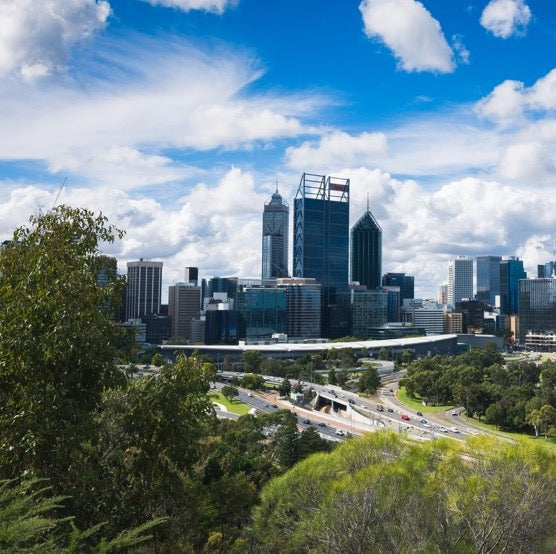The Western Australian Planning Commission has announced the Perth and Peel Urban Greening Strategy which aims to enhance existing tree canopy and create additional green spaces throughout our urban areas.

This strategy will include the following measures:
- Increasing support for planting programs
- Reporting on tree canopy data
- Education and awareness programs on the importance of urban greening
- Increasing awareness of the urban heat island effect, with emphasis on identification and mitigation
- Establishing green linkages and investigating greening opportunities on State Government land that has not been used effectively
- Utilising urban greening grant programs
You can have your say and help inform the strategy in the survey here. Responses are due by 7 June 2024.
In 2020, the WA Department of Planning, Lands & Heritage Urban Tree Canopy Dashboard showed that average canopy cover across the Perth metropolitan area was just 16% and shrinking. That figure drops to alarming levels in suburbs undergoing extensive development and land clearing – Alkimos has just 1% canopy cover in street blocks!
What is Tree Canopy?
Tree canopy is the layer of leaves, branches and stems that cover the ground when viewed from above. This canopy gives us precious shade. Tree canopy combines with other vegetation to make up the Urban Forest. Our Urban Forest includes all the trees and shrubs in our urban areas; in our parks, public spaces and community gardens, our remnant bushland, our streets and other transport corridors, and our private gardens.

Tree canopy helps to make cities liveable, by providing shade that makes spaces cooler. It's also good for our health and mental wellbeing, as trees clean our air and provide shady spaces for rest and relaxation.
Why is Canopy Cover a Concern?
Tree canopy is declining largely through land clearing for development. Loss of larger trees and green space in new and rapidly expanding suburbs is a particular cause for alarm. There is currently very little State planning policy, and limited local planning policy, to stop felling of trees in backyards in Perth.
The protection and growth of canopy cover requires a multi pronged approach through community education, tree planting programs and protective legislation. Tree removal should be the last resort, with planning controls in place to prevent the felling of large trees over a certain height on private land. Both the City of South Perth and the City of Nedlands want the WA Planning Commission to approve planning amendments that mean landowners would require a development application if they want to clear trees over 8 metres tall on private property.

Why is Canopy Cover So Important in a Changing Climate?
Scientists predict that if we can achieve 30% Tree Canopy Cover in Perth by 2040, we can lower temperatures in our city by up to 10°C. At present, the urban heat island effect is having a major negative impact on the liveability of our cities. When large trees are felled in cities and suburbs, they are often replaced with hard surfaces like pavers or concrete, which are usually highly effective at absorbing and storing heat during the day. Localised temperature increases are caused by large amounts of paved and dark-coloured surfaces like roads, roofs and car parks in our cities and urban areas.

This heat is released at night leading to higher temperatures after dark. This is known as the urban heat island effect.
Communities in suburbs with low tree canopy cover have been found to be more at risk from heat-related stress and illness in a changing climate, according to modelling conducted by the CRC for Water Sensitive Cities. Elderly people, children and those living on lower incomes or on the streets are especially at risk from rising temperatures in urban areas, because they are more vulnerable to heat-related stress and illness or less likely to use air-conditioning due to financial worries.
What can you do to improve canopy cover?
- Have your say by making a comment via the WA Government’s Urban Greening Survey (closes 7 June 2024).
- Lobby your local councillors to do more to protect trees in your neighbourhood through changes to local legislation.
- Support a not for profit group that is protecting and planting trees in your neighbourhood.
- Learn about the value of canopy trees and share your knowledge with your community.
- Ensure the existing canopy trees on your property are well cared for with regular maintenance, watering, mulch and fertiliser as required.
- Plant more trees in your own urban garden.
- Join a community planting day or find a friends groups and plant more trees in your local bushland






Leave a comment (all fields required)